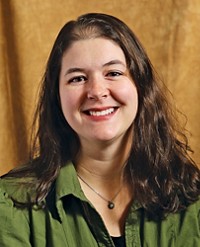Advertisement
Grab your lab coat. Let's get started
Welcome!
Welcome!
Create an account below to get 6 C&EN articles per month, receive newsletters and more - all free.
It seems this is your first time logging in online. Please enter the following information to continue.
As an ACS member you automatically get access to this site. All we need is few more details to create your reading experience.
Not you? Sign in with a different account.
Not you? Sign in with a different account.
ERROR 1
ERROR 1
ERROR 2
ERROR 2
ERROR 2
ERROR 2
ERROR 2
Password and Confirm password must match.
If you have an ACS member number, please enter it here so we can link this account to your membership. (optional)
ERROR 2
ACS values your privacy. By submitting your information, you are gaining access to C&EN and subscribing to our weekly newsletter. We use the information you provide to make your reading experience better, and we will never sell your data to third party members.
Careers
It is the only way
by Bibiana Campos Seijo
February 19, 2018
| A version of this story appeared in
Volume 96, Issue 8
I’d like to share a powerful quote with you:
You must make women count as much as men; you must have an equal standard of morals; and the only way to enforce that is through giving women political power so that you can get that equal moral standard registered in the laws of the country. It is the only way.”
It is by British activist and leader of the British suffragist movement Emmeline Pankhurst. I came across it in the past couple of weeks as the U.K. celebrated 100 years since its Parliament passed the Representation of the People Act 1918, which gave all men over 21 and all women over 30 the right to vote. Now if you, like me, are left wondering about the differential in minimum voting age, you will be interested to hear that the reason for this was to prevent men from becoming minority voters after the huge number of deaths from World War I. This bill was critical in the fight for women rights in the U.K. and beyond, with the U.S. taking a similar step only two years later, when the 19th Amendment was formally adopted.
The diversity theme has been featuring a lot in the media recently. In the scientific space alone, for example, we celebrated the International Day of Women and Girls in Science on Feb. 11. It’s only the third edition of this commemoration, but it is picking up momentum, with many events taking place around the world designed to celebrate the achievements of women and girls involved in science, technology, engineering, and mathematics (STEM) fields.
There was also a lot of activity on social media not only celebrating women in STEM through a variety of hashtags (#InternationalDayofWomenandGirlsinScience, #iamachemist, and #WomenInSTEM are some examples) but also discussing a Feb. 6 article by the Atlantic’s Ed Yong, in which he describeshow he’s been working for the past couple of years to monitor and correct the gender imbalance in his stories. Yong, a well-known science journalist and author, confesses to being shocked after an initial benchmark he took of his own stories showed that only around 24% of the quoted sources were women, while 35% of his work featured “no female voices at all.” As he abandoned what he calls “passive concern” and started to implement mechanisms to track diversity, things changed rapidly over a period of just a few months; now around 50% of his quoted sources are women, and only 7% of his stories have no female sources. At C&EN we are very conscious about this, and I’m planning to dedicate an editorial to this topic in the not too distant future.
In the meantime, one thing female scientists can do to help journalists such as Ed is to join 500 Women Scientists as a resource. Four women who met in graduate school started the organization 500 Women Scientists after the November 2016 U.S. election. One of their goals is to connect an “extensive multidisciplinary network of vetted women in science with anyone who needs to consult a scientist for a news story, invite a keynote speaker or panelist for a conference or workshop, find a woman scientist to collaborate on a project, or serve as a subject matter expert in any capacity,” according to the group’s website. There are far too many examples news articles, conferences, and events where women are underrepresented.
Finally, still on diversity, C&EN is running a series of activities on the theme of sexual harassment in the sciences. Building on the feature we published in September and that was widely circulated in chemistry departments around the country, we organized a webinar (now available for on-demand viewing) and a symposium and workshop at the ACS national meeting in New Orleans to continue to raise awareness of the issue. The symposium, titled “Science of Sexual Harassment,” will take place Monday, March 19, at the Hilton New Orleans Riverside; a bystander intervention workshop will follow the next day. Action is the only way.
Views expressed on this page are those of the author and not necessarily those of ACS.



Join the conversation
Contact the reporter
Submit a Letter to the Editor for publication
Engage with us on Twitter